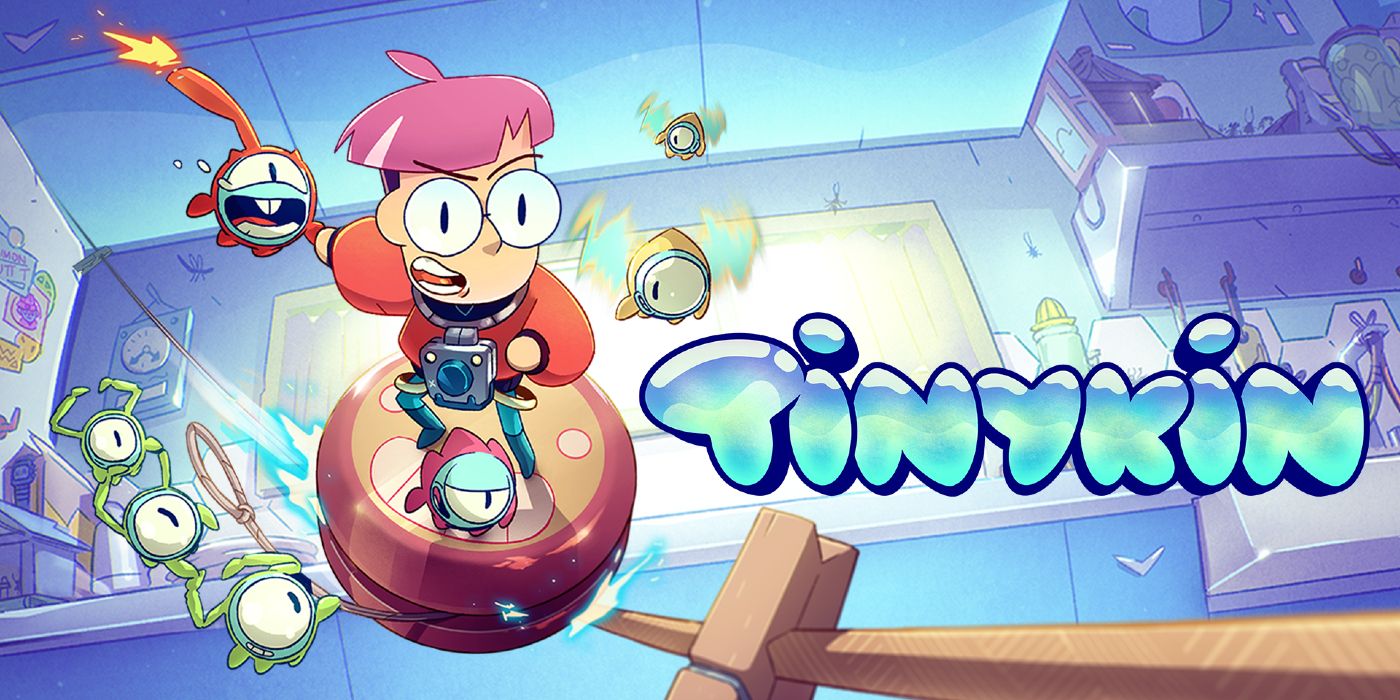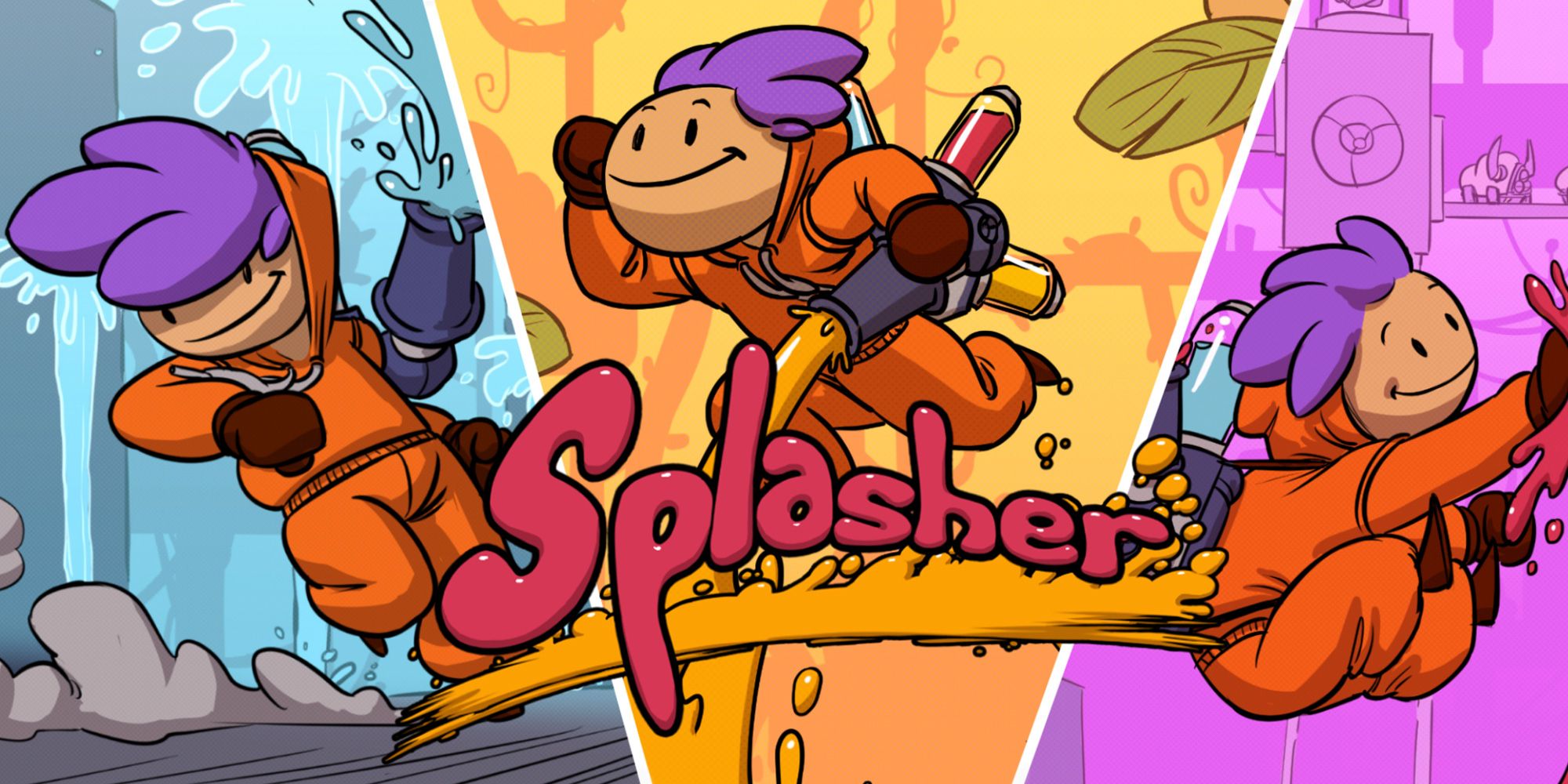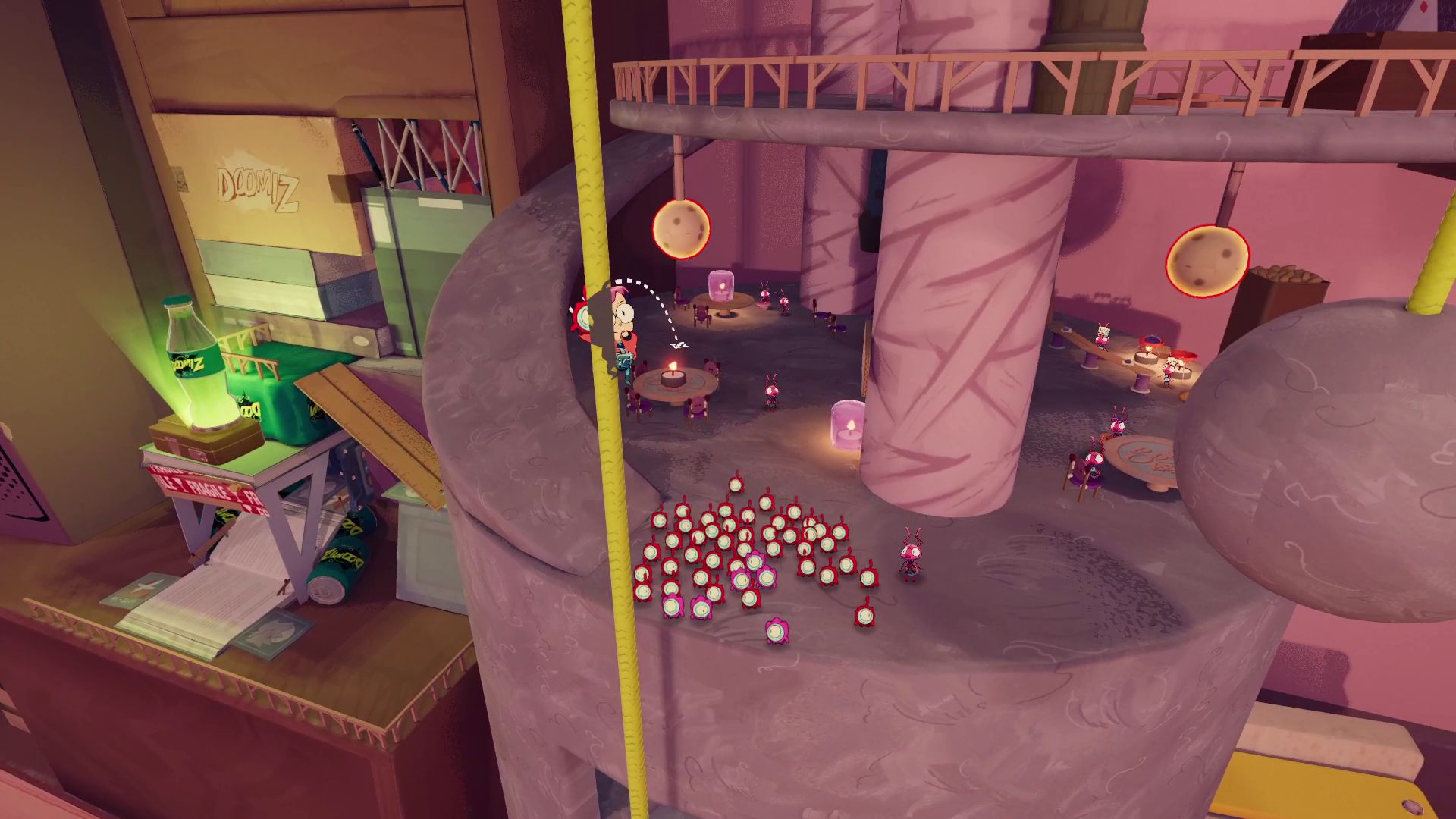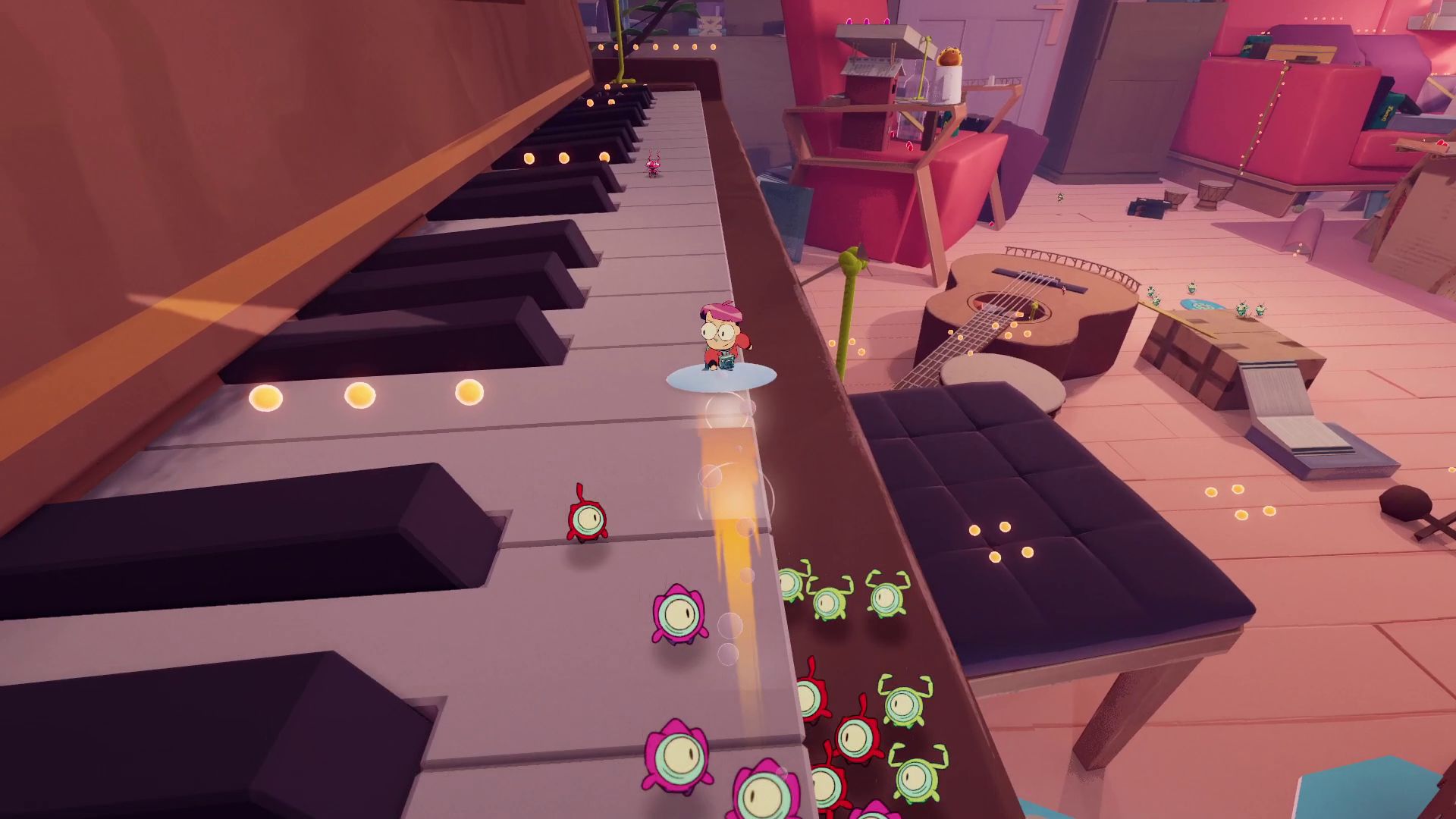
While a few weeks have passed since the return of E3, after a year's hiatus due to the ongoing coronavirus pandemic, many are still discussing its reveals. Major titles like Eidos Montreal's Guardians of the Galaxy are still announcing new details, but others have gone back to more quiet development time. Indie developer Splashteam was particularly invigorated by the public's response to its explorative 3D platformer Tinykin, and its co-creative directors said they want to deliver the best game possible.
Game Rant spoke with Splashteam's Romain Claude and Marie Marquet about Tinykin's development process, influences from Pikmin to Rick and Morty, and potential aspirations as a new IP. This interview has been edited for brevity and clarity.
RELATED: GameStop Reveals Its 10 Most Pre-Ordered Games After E3
Q: Tell me a little about the origins of Splashteam. One big selling point for the studio is its prior connections to Ubisoft, for example with Romain working on Rayman games. Why the transition to indie development?
Claude: I always wanted to make my own games. That’s why after several attempts to turn personal projects into real ones in parallel with my work at Ubisoft, I finally decided to quit my game designer job, and then managed to start a commercial game project with my friend Richard Vatinel in 2013. This eventually became Splasher, the first game we released as Splashteam.

Q: What was it like going from work on big, acclaimed series such as Rayman to smaller, more personal projects?
Claude: Very exciting, but also very difficult. When you work in a big team, each single thing that is useful to bring a game from a prototype to a commercial release is handled by at least one person who’s 100 percent dedicated to it. When you're on your own with a very small team, you have to do so many jobs at once that you need to work your ass off, learn a lot, and accept some sacrifices like having less free time and potentially running out of money. Developing your game becomes both your job and your leisure. Fortunately, if you survive your first game and if it’s not a complete failure, you can start to see things a bit differently.
Q: Splasher went through an extensive prototyping phase that can be seen on Romain's itch.io page. How did that idea come about and evolve? Were other game ideas also considered?
Claude: Richard and I have been friends since video game school in 2006. With him being an excellent 2D artist and animator, and me being a good mix between a designer and a programmer, we always thought that we should make a game together. While working at Ubisoft, I was developing a game engine with the XNA framework. In the meantime, Richard was hired in a company to work on games for Facebook, and was also making small games with Flash and Construct in his free time. One game in particular was really cool: onEye, a 2D metroidvania shooter/platformer featuring a one-eyed alien shooting bullets in a post-apocalyptic world.
I said to Richard, “Why not use my engine to make it a full game and release it?” So I started to work on it, but a few months later colleagues at Ubisoft suggested I try Unity and it was actually a very good idea. With an engine that was not my homemade, clanky thing, we started to concentrate a lot more on design and progressively a new game concept started to emerge.
The paint idea came from a blood spot prototype which led to, “Why not make gameplay out of that, with different blood properties?” Then a friend told me about “Power of Paint,” the student project that inspired the paint mechanics in Portal 2. Doing this, but in 2D, became the core of the concept. The starting point was very far behind, but a new project was born!
Q: What was the reception like to Splasher, and how did that influence the decision to move onto new projects?
Claude: Splasher wasn’t a big commercial success, but successful enough to make a living out of it for me since the PC release in February 2017. Richard decided to step away from game development to fully concentrate on drawing, and he became a teacher in art schools. At first I was very tired so it took a little while to get my motivation back, but with the very good critical reception and this passion that I have for making games, I went back to prototyping a few months later.
This new project was not a sequel, because I wanted to explore new horizons, but it was too ambitious so I canceled it in 2018. Then in February 2019 after the Global Game Jam, a new journey began, with a game initially called Bubble Town, then “Sbirz,” and finally Tinykin.
RELATED: What the Starfield Concept Art Tells Us About the Game's Galaxy
Q: What lessons were taken from prior projects to change the development process on Tinykin, if there were major changes?
Splashteam: Splasher and Tinykin are very different. The only common point is having Romain as Game Director. Apart from that, Splasher was mostly developed by two people working at home, while Tinykin is made by a much larger team. Tinykin has a publisher - tinyBuild - involved in the production process, while Splasher was signed by Dear Villagers at the very end of its development cycle. Splasher is a 2D linear arcade game, while Tinykin is a 3D platforming game with a lot of exploration.
So we’re kind of making the big gap here, while keeping the DNA of the studio in terms of game feel, and globally in terms of what’s our definition of an excellent game.
Q: Pikmin appears to be a substantial influence for the game's critter-throwing mechanics and Honey I Shrunk The Kids-style real-world aesthetic. Can you speak to how important that series was, and why it may have become a baseline for the ideas here?
Splashteam: Tinykin was born from a Global Game Jam game in 2019, and the jam’s theme was: “What home means to you.” Called Bubble Town, the small game that we made was about a kid living in a bright and warm bubble, set in the middle of a procedurally generated dark and creepy forest. Outside, a lot of other kids were lost and the point of the game was to go find them in order to bring them back to your home, the safe place.
As much as you were collecting other kids, the group around you was growing, but the time outside the home-bubble was limited. The challenge was to go as far as you could to bring back the biggest group of kids possible, without running out of time and dying outside. We found the idea really interesting, and particularly the nice feeling of exploring and growing a group of tiny followers along the way. A few weeks later, we decided that we should try to make a real game out of it.
Pikmin being a game we like, it naturally became one of the main inspirations to dig our initial prototype. For Honey I Shrunk The Kid, this came a bit later when we started to think about a setting. This movie is one of our favorites among the golden 80s/90s sci-fi comedy era. Also, with Pikmin being mostly set in an outdoors environment with very few human things, we decided to go mostly indoors in a human house, convinced that plenty of cool situations could be imagined in this kind of setting.
Q: Nintendo's series sees sporadic releases, but it seems to be coming back into the fold with Pikmin 3 Deluxe and the upcoming Niantic mobile game. Has Tinykin's development offered Splashteam a different perspective on how it might want to see other games in this genre evolve going forward?
Splashteam: We don’t think so. People are sometimes making the joke, “Pikmin 4 is still missing. Splashteam: Ok, let’s do it ourselves.” We actually like this because it’s funny and sounds very epic, but it’s not very accurate.
We won’t hide that some people in the team are craving a new Pikmin game, but we are making this game mostly because there are things that are appealing to us in its mechanics. In other words, it inspires us to make our own interpretation of what a game like this would look like, if it had been made by Splashteam.
RELATED: Pokemon GO Developer Niantic is Making a Pikmin Mobile Game
Q: What other games or media served as influences for this title?
Splashteam: You can find games such as Mario Odyssey and the Ratchet & Clank series, but also Paper Mario for the narrative aspects and 2D/3D mix. The design team also has two big fans of a 3D action/platformer from their childhood: Fur Fighters. So Tinykin is actually the union of that: A Pikmin-style approach set in a platformer, with a lot of exploration. On the writing side, the mood of what we are building is close to the twisted characters and situations you can find in TV shows such as Rick and Morty or the Terry Pratchett books.
Q: The bits of story available online set up the narrative of Tinykin's main character being stuck in a perpetual 1990s setting, dealing with insect people. Where did this come from, and how will it play into the game mechanically?
Splashteam: We wanted a story that makes you think you travelled back in time, but... Shrunk!

The choice of the period wasn’t immediate and we considered other periods before landing on the 90s (including more futuristic ones, or less futuristic ones like the 70s). The reason for this final choice is actually pretty simple: It's a time that everyone who experienced it as a child loves. The funny thing is that for younger people it will sound a bit more exotic, but not less intriguing.
It’s also a good choice because entertainment was into crazy comedy sci-fi at that time, and it matches the mood of our story and characters. How are insects talking to you and living like they were tiny humans in this giant house? We can’t tell you for now.
Q: How will the different Tinykin that players can find affect both the narrative and gameplay?
Splashteam: We will let you figure this out on your own in the game, but for sure they have a role to play in the game’s plot. They are somehow linked to Milo’s faith and it will be up to the player to find out why. On the gameplay side, each color of Tinykin has its own function, and they are the key to solving the puzzles in the places you visit.
Q: At what point did tinyBuild get involved, and was the team considering opportunities such as E3 before that?
Splashteam: Publisher tinyBuild started to get involved during the pre-production phase. We were finalizing the details of the gameplay, tackling technical questions and basically making the game ready to enter production. So they helped start the actual production of the game by giving us precious advice.
Now that the production is on track, we regularly review content together to make sure that things run smoothly. Tom Brien (tinyBuild’s co-founder) also actively participates in the design of the game by making relevant suggestions and feedback every week. On the marketing side they have a strong expertise, with some of their titles being very successful, and being at E3 is an example of what we can do thanks to them. If we had been alone we would probably not have been at E3, or maybe in a smaller event than the PC Gaming Show, and certainly not with a trailer that good.
Q: What was it like debuting the game at E3 alongside studios such as Ubisoft? Especially with the new Mario + Rabbids game.
Splashteam: We are happy to have our own game showcased at a big E3 event alongside the blockbusters. We are also happy (as players) to discover what are the next big things are from the big studios.
RELATED: Every New Game Confirmed At E3 2021
Q: Tell me a little about working with Andrea Asperges and Federico Bressan on the animation which introduced the game. Why did you decide to go this route for the trailer?
Splashteam: With Tom from tinyBuild we initially thought it could be great to announce the game with an animated trailer. So we started to look for 2D animators that could create a nicely animated sequence, with the style we were aiming for. It turned out that Andrea and Federico landed in our top list, and they said yes.
All the characters of the game being 2D, we really wanted to put the emphasis on this 90s TV cartoon vibe. In the end, the result speaks for itself, and that’s all we wanted for the first reveal.

Q: Now that E3 is finished, what comes next as far as Tinykin's development? Do you have future plans and desired additions lined up leading to release?
Splashteam: Tinykin’s first trailer got a very good reception, we’ve read a lot of encouraging feedback on social media, so we are more determined than ever to make the best game possible. The production will keep going and more gameplay will be shown in the next months until the release next year. This is just the beginning.
Q: How do you hope this will be received when it launches next year?
Splashteam: It goes without saying that we hope the game will be a big hit!
Q: Are there plans to expand either upon this game or its universe with sequels? Or move onto something new?
Splashteam: It’s a bit early to talk about this, but yes we would like to create a franchise that could go beyond the first game. We are building a rich universe with strong characters and solid gameplay, so there is a chance that we will have more to say about Milo, the Tinykin, and Earth's biggest mystery.
Q: Is there anything else you want to add?
Splashteam: Please stay tuned and do not hesitate to wishlist the game on Steam to show your support.
[END]
Tinykin is scheduled to release in 2022 on PC, with additional platforms to be confirmed.
MORE: Papetura Interview: Developer Talks Solo Development, Handcrafted Games

